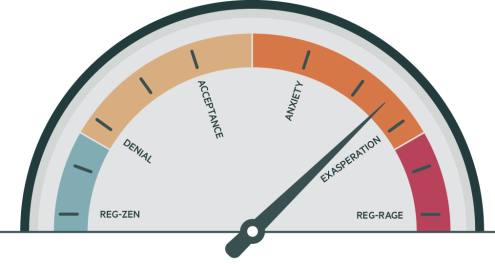Once considered disruptive and revolutionary, the evolution of fintech in Europe over the past half decade has meant the ‘us versus them’ narrative that pitted fintechs against incumbents no longer applies, according to the European Institute of Innovation and Technology (EIT Digital).
Competition remains, but collaboration prevails, in an emerging ecosystem of diversifying players with increasingly integrated services. Fostering innovation while managing risk remains the challenge for regulators, and in mapping the evolution of fintech in Europe, EIT Digital poses four potential scenarios for the future.
Co-operation and competition
Cristiano Codagnone, author of the report — Fintech Innovation: A Balancing Act Between Disruption And Regulation — points to three key themes from the research: opportunity for a more collaborative approach between traditional banks and fintech; uncertainty about the extent to which big tech will enter the market; and a need for standardisation of regulation across Europe.
Fintech growth has been particularly prominent in the payments sector, with 93 of the global sector’s top 335 ‘unicorns’ providing payment solutions, the report says.
While initially seen as disruptive, fintech collaboration with traditional banks is changing the landscape of the financial sector, Mr Codagnone says. Banks’ regulatory expertise, funding, and large customer bases are increasingly joining forces with fintech innovation.
Still, fintechs pose some threat to traditional banking, reports EIT Digital, particularly within payments, lending and personal finance management. Data-driven personalisation, together with lower operational costs, typically enable fintechs to offer better customer experiences with lower fees.
And co-operation could also be strengthened, Mr Codagnone says, pointing to the need for more collaboration within open banking. The EU’s revised Payment Services Directive (PSD2) has led the way in Europe, together with the UK’s open banking standards. In April 2023, the UK government announced its intention to establish a long-term regulatory framework to better design for the future of open banking.
“Traditional banks and fintech could work together mining data because [PSD2] makes it mandatory for banks to share data. This data can be used in a collaborative way between fintechs and banks, and against the potential threat of it being monopolised by big tech,” Mr Codagnone says.
Central banks are increasingly wary of the role of big tech in the development of soft currencies and aim to defend existing currencies, Mr Codagnone says. This comes as big techs develop technologies enabling online, in-store and mobile digital payments through user accounts associated with bank-issued payment cards.
As cryptocurrency becomes part of the money flow, central banks may have to relinquish control of the amount of money in circulation, Mr Codagnone says, pointing to challenges with managing monetary and fiscal policy.
Similar concerns were raised about the impact of Facebook’s (now Meta) failed Libra currency in 2019 and its potential impact on money laundering and terrorism financing, as well as privacy and data security.
So far, the report says, big techs have only entered the payments segment, and more so in emerging and developing economies — particularly China — than in advanced economies.
Mr Codagnone adds that traditional banks will continue to maintain the upper hand over big tech, given that most of the world’s biggest banks are clients of big tech for other services.
“If they [big techs] cannibalise their own client, this could be difficult; the traditional banks have leverage on that,” he says.
Four scenarios for the future
In an attempt to pierce the veil of uncertainty that regulation and market dynamics bring, the report identifies four key scenarios for the future evolution of fintech and banking across Europe.
First, the ‘agile open market’ scenario foresees a lightly regulated environment that enables fintechs to flourish and incumbents to innovate. As competition grows, traditional banks will adapt, creating a more customer-centric market landscape.
This scenario presents a large scope for positive impact, but is less effective in mitigating financial stability risk, Mr Codagnone says.
He adds that an alternative, somewhat more “dystopian” scenario, could arise as a result of stringent regulations that favour incumbent banks and hinder fintechs — the ‘regulated traditional dominance’ scenario. Here, traditional banks would maintain their dominance across the financial services sector, with limited integration of fintech.
Next, the ‘collaborative innovation’ scenario presents a somewhat “status quo” option, Mr Codagnone says. It sees co-operation between banks and fintechs under less regulatory oversight. Traditional banks would embrace fintechs, enhancing banking services and improving customer experience, while fintechs maintain a strong position.
“Basically, the traditional bank gets proactive in collaborating with fintech. Although, this collaboration may reduce the number of new entrants,” Mr Codagnone says.
Finally, the ‘hybrid integration’ scenario would see heavier regulations that, although limiting fintechs, would enable banks to better integrate and innovate, while maintaining market control.
Most “desirable” is the ‘agile open market’ scenario, Mr Codagnone says, “although it does not fully address traditional concerns about financial stability and risk reduction”.
Balancing regulation
Finding the right regulatory balance remains an ongoing challenge. In the report, EIT Digital advocates for proportionate regulation tailored to specific activities and risks, rather than restrictive blanket rules. It also calls for restrictions on higher-risk offerings to retail consumers, like crypto assets.
As the digital transformation of finance makes rapid progress, regulators’ technological expertise must keep pace. Across Europe, regulation so far has struggled to keep up with the rapid emergence of new markets, with start-ups enjoying light oversight in their early stages.
But as the industry matures, regulators will likely embrace a more active role to manage risks regarding consumer protection, fair competition, and financial stability, while still enabling innovation. Mr Codagnone looks to start-ups and incumbents alike leveraging technology to expand consumer choice and efficiency.
The landscape of future bank-fintech collaboration depends on the outcome of Europe’s regulatory balancing act.







